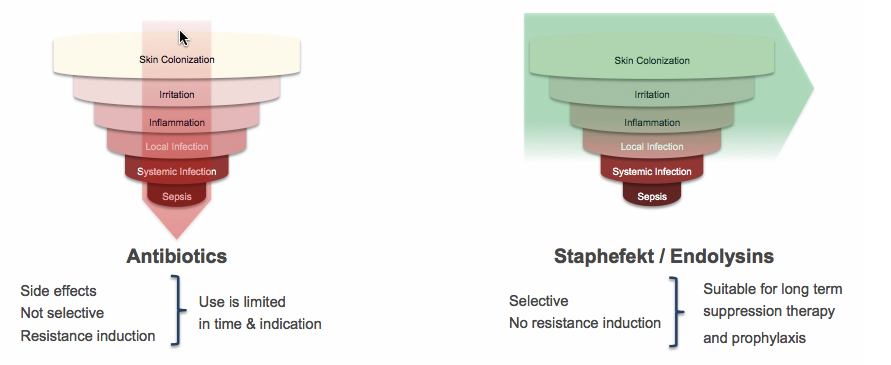A new study has shown that on average, 70% of eczema patients are colonised with Staphylococcus aureus bacteria on their skin lesions (which include MRSA). Could this the Dutch biotech Micreos therefore have the solution to preventing spread of antibiotic-resistant strains in Eczema patients?
 Atopic dermatitis (eczema) is an extremely common skin affliction which can cause in painful lesions, which are open to infection and difficult to manage.
Atopic dermatitis (eczema) is an extremely common skin affliction which can cause in painful lesions, which are open to infection and difficult to manage.
It has a variety of suspected causes, many of which are chemical based (such as excessive hand-washing in the Food industry and hospitals). However, this new research has put some surprising statistics behind a potentially less obvious suspect – strains of Stapylococcus aureus, which can include methicillin-resistant types (MRSA).
In a study published in the British Journal of Dermatology, up to 80% of patients with eczema were found to have a strain of Staphylococcus which produced a toxin. Toxins produced from certain strains are irritating to the skin, causing gradual build up of inflammatory lesions and plaques.
The systematic review from Erasmus MC University in Rotterdam looked at 95 observational studies comprising over 9000 patients. Interestingly, 39% of eczema patients carried S. aureus on healthy skin, compared with 70% that carried it on lesional skin where the dermatitis is present.

This is an almost twenty-fold increase compared to healthy controls.So how can this kind of omni-present bacteria be tackled to prevent spread of S. aureus infections and onset of skin conditions? The senior author of the paper explained:
To decipher the exact role of S. aureus, studies using targeted anti-staphylococcal therapy for the skin need to be done.”
Well, Micreos is a Dutch biotech which helped fund the review, and is now working on the development of Staphefekt. This is a bacteria-killing enzyme (endolysin) specific to S. aureus which is as effective in killing MRSA as other strains of S. aureus.
The mechanism of action of endolysins is unrelated to that of antibiotics, so even resistant bacteria, such as MRSA, are susceptible.

This is because endolysins are produced by bacteriophages, which are a novel angle of attack on antibiotic-resistant strains. They have also been employed in trials against infections in burn patients.
Staphefekt is the first endolysin registered for use on the skin’s microbiome, and is currently used as the active compound in Gladskin (a range of topical creams and gels for inflammatory skin conditions, such as eczema).
Trials for the Staphefekt protein in Gladskin products against placebo are therefore ongoing in Rotterdam.
How the endolysin product Staphefekt works…
Staphefekt by MICREOS | English from Gladskin on Vimeo.
Feature Image Credit: Gladskin’s Animation – (Credit: Micreos)
Figure 1: Lloyd S. Miller & John S. Cho (2011) Immunity against Staphylococcus aureus cutaneous infections, Nature Reviews Immunology, 11, 505-518, doi:10.1038/nri3010





